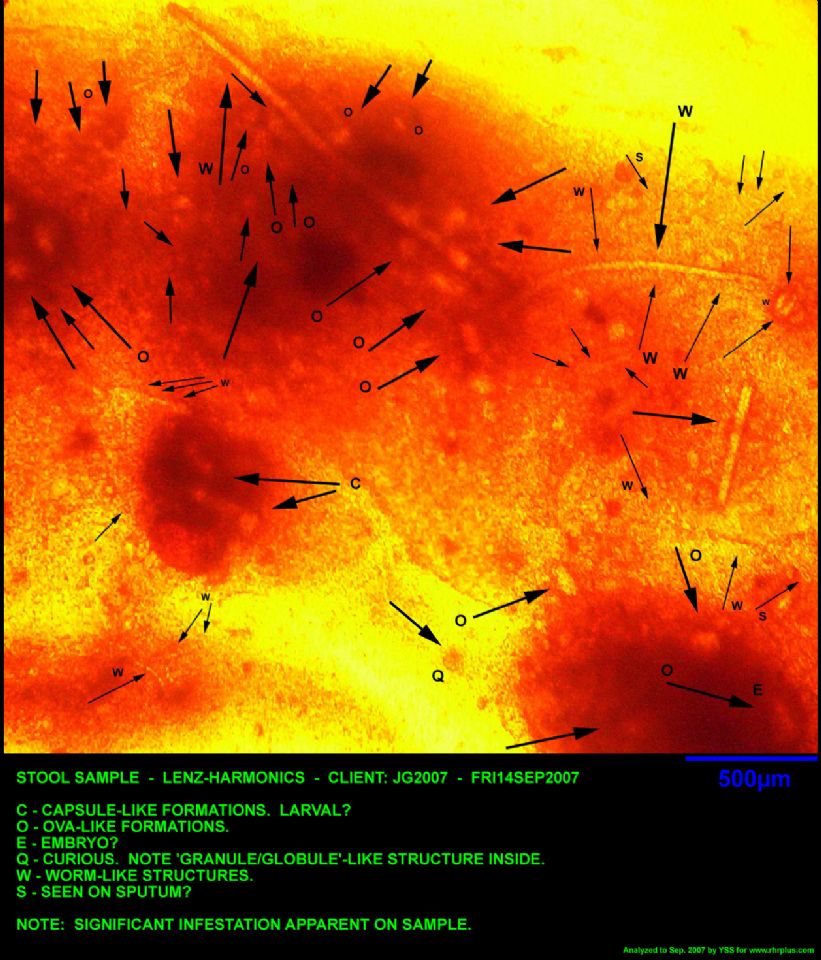Parasite eggs and “shedding” *Micrograph Added*
Hello Everyone:
In a post below, I should of mentioned this for consideration about so-called “shedding” but forgot to – sorry about that. It is a good question for consideration and I decided to make a post about it. There seems to be some assumptions or misconceptions made about whether or not something can be found in submitted samples.
It is no great secret that one ascaris roundworm can lay 250,000 eggs per day; one tapeworm lays 500,000 eggs per day; and one hookworm lays 25,000 per day. These 3 parasites are the most infectious among humans. Pinworms are another. There are many parasites, obviously, that are in the thousands and all of them lay eggs into the thousands, per day. Think about that for a moment! A lot of eggs are being laid.
People don’t harbor 1 roundworm unless it is a specific species and it would be highly unusual to have “just one parasite”. The medical establishment considers a “small infection” of roundworms is between 50-200 worms. Parasites live in colonies along the intestinal tract. Most worms live in the upper intestines which means they are hiding in 20 feet of intestinal tract. The other 6 feet is the colon and few reside there which is WHY they are rarely found in colonoscopies, if ever; parasites are also rarely found when doing endoscopies while viewing the stomach. The colonoscope and endoscope are specific tools and aren’t designed for viewing the entire intestinal tract. This is the reason why stool samples are important. There are also many parasites whose lifecycle involves the lungs which is why sputum tests are performed.
Supposedly, according to medical literature, male worms are never found so this tells us that ALL worms are female (sticking with medical information, at the moment). Given this information, let’s assume that all the female worms are mature enough to lay eggs, using the “small infection” rate above – worms lay eggs all day long – they don’t lay eggs one day and not the other. Simple mathematics tells us that there are between 12,500,000 - 50,000,000 eggs laid per day, if we were to use the infection count! Considering the high rate of egg laying there is a very strong possibility that some of those eggs might mature, which means an increase of hatchlings – some live and some die. Let’s take this a step further and be extremely conservative with using the figure of 10 roundworms presently laying eggs; that means 2,500,000 eggs per day!

Most people don’t move their bowels well enough. Even if they did, “something” is bound to be found either immediately and/or over a period of time under observation; hence, the reason for the long waiting period with rhrplus.com to be SURE nothing is missed. Observation is laborious work if done properly. Therefore, how is it possible for “something” to be missed unless the testing methods are faulty?
There are a lot of questions that need to be addressed with conventional methods. What is going on with other labs if they are unable to find eggs or parasites in one sample, let alone 2-3 samples, or the most ridiculous sampling of 12 takes to find anything!? What about when people purposely add a worm to a sample and the results are returned negative?
The above is simple logic and simple mathematics.
Please take the time to read What Happened to Proven Sciences? -- it may be helpful in understanding lab problems and negative results. Thank you.
Best of Health,
DD
(This will also be posted on the site for educational purposes.)

